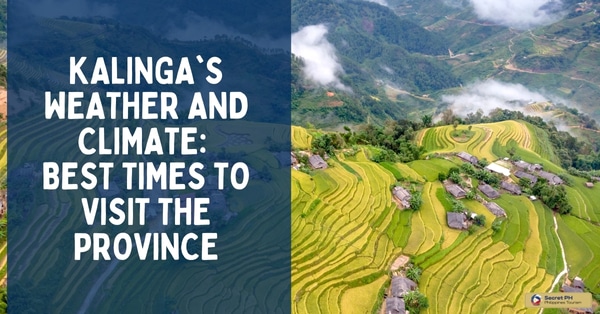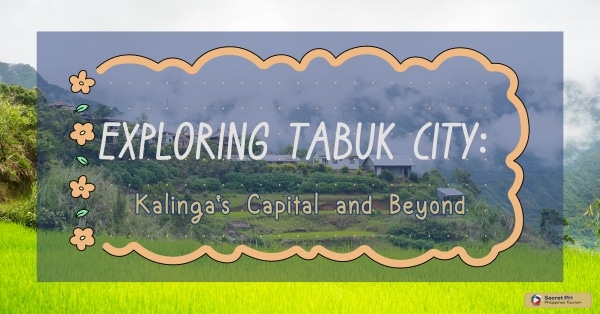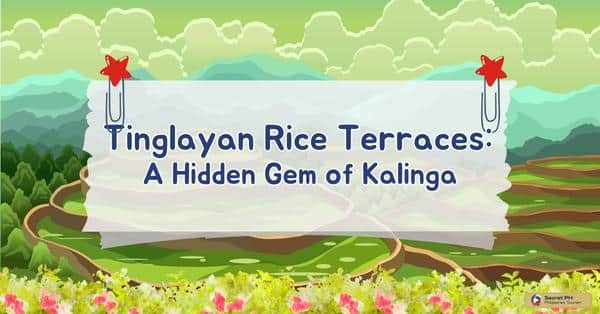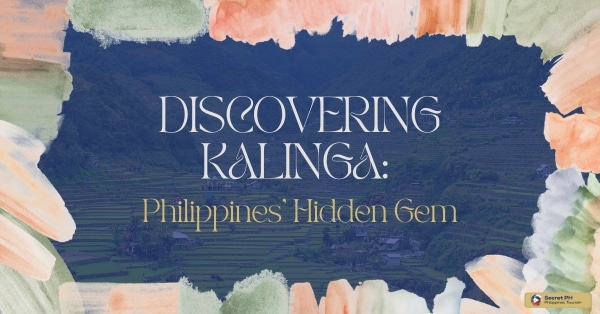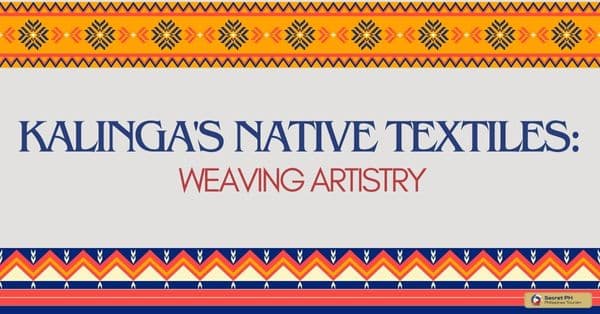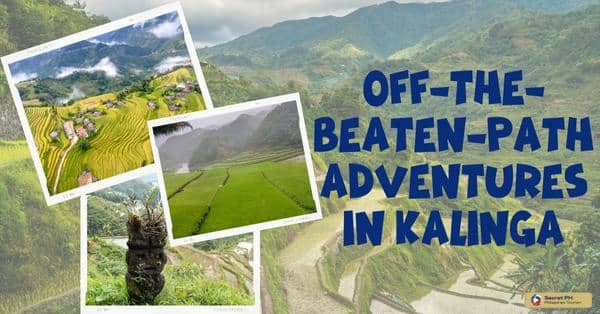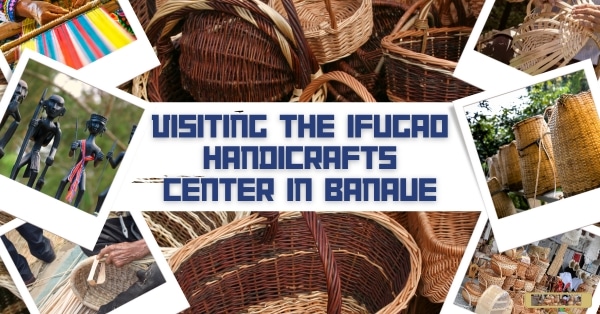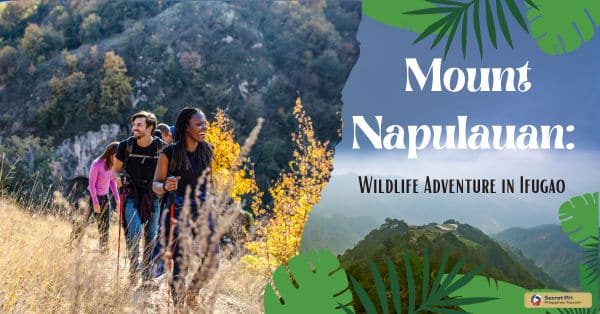Kalinga Province, in the Philippines, teems with a vibrant culture upheld by its indigenous people. This culture includes rich oral traditions, ancient tattooing, traditional clothing, and flavorful cuisine. Festivals like the Kalinga Bodong Festival celebrate this heritage, making Kalinga a captivating destination for those seeking a deep dive into its unique traditions and customs.
In this blog, we will delve deeper into the customs and traditions that make Kalinga truly unique and special. From oral traditions to tattooing, from traditional clothing to festivals, get ready to discover the rich culture of Kalinga. So let’s begin our journey through the wonders of Kalinga province! Let’s explore and appreciate the diversity and beauty of this remarkable place, and gain a deeper understanding of its people.
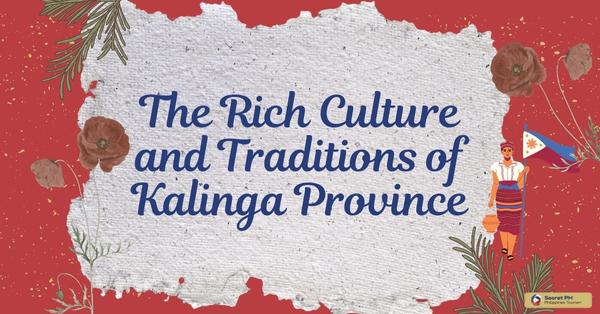
The Indigenous People of Kalinga
The Indigenous People of Kalinga, also known as the Kalinga tribe, are one of the indigenous groups in the Philippines. They inhabit the mountainous region of Kalinga province in the Cordillera Administrative Region. The Kalinga people have a rich cultural heritage and are known for their distinct traditions, craftsmanship, and a strong sense of community.
The Kalinga tribe is famous for their practice of traditional tattooing, which is considered a symbol of beauty, bravery, and identity. Their intricate designs tell stories of the individual’s achievements and social status within the community. Another notable aspect of Kalinga culture is their strong emphasis on oral tradition, with storytelling and chants playing an integral role in passing down knowledge, history, and morality from one generation to the next.
Despite modernization and the influence of external cultures, the Kalinga people have managed to preserve their customs and way of life. They continue to engage in subsistence farming, primarily cultivating rice and vegetables. Additionally, festivals such as the Kalinga Bodong Festival celebrate their cultural heritage and promote unity within the community.
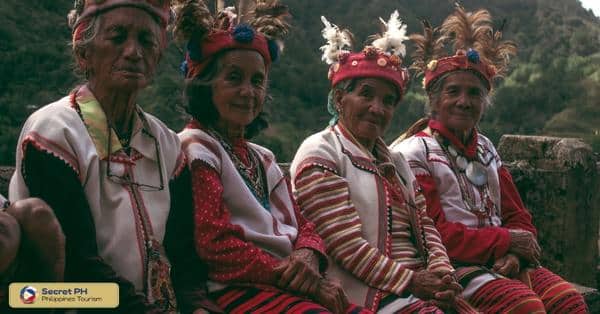
Kalinga’s Rich Oral Traditions
Kalinga’s rich oral traditions are a testament to the cultural depth and historical significance of this Philippine province. These traditions encompass a vast array of myths, legends, folk tales, and oral histories passed down through generations.
The storytellers, often respected elders within the community, play a crucial role in preserving and transmitting this wealth of knowledge. These tales not only entertain but also educate, teaching moral lessons, recounting the history of the Kalinga people, and explaining their deep connection with nature and the spiritual world.
The oral traditions of Kalinga are not limited to stories alone; they also encompass songs, chants, and rituals that are integral to their way of life. These expressions of cultural identity are used in various contexts, from celebrating harvest festivals to marking important life events. Kalinga’s rich oral traditions serve as a living repository of the community’s values, beliefs, and customs, reinforcing their collective identity and providing a bridge between past and present.
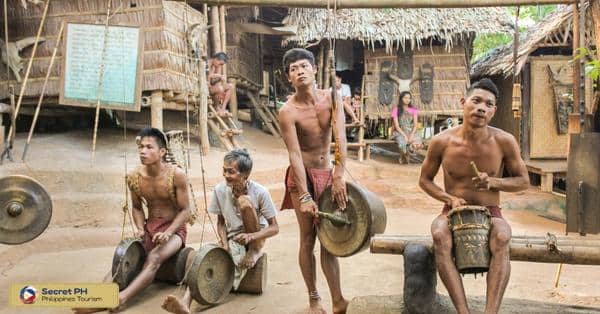
Tattooing as a Cultural Tradition
Tattooing is a deeply ingrained cultural tradition in Kalinga, where it holds profound significance beyond mere aesthetics. Known as “batok,” Kalinga tattoos are intricate designs that convey a person’s life story, achievements, and tribal affiliations.
These tattoos are applied using traditional tools like bamboo sticks and thorns, making the process a skillful and painful rite of passage. Kalinga tattoos are not only a form of self-expression but also a visual record of an individual’s journey, reflecting their cultural identity and experiences.
The practice of tattooing in Kalinga goes beyond personal adornment; it also serves as a powerful marker of tribal identity and unity. These tattoos are often associated with cultural milestones, such as coming-of-age ceremonies or warrior achievements.
Moreover, they act as a living testament to the resilience and strength of the Kalinga people, who have upheld this ancient tradition for generations. Tattooing is not just a form of body art; it is a cultural language that tells the story of the Kalinga tribe and their enduring commitment to preserving their unique heritage in a rapidly changing world.
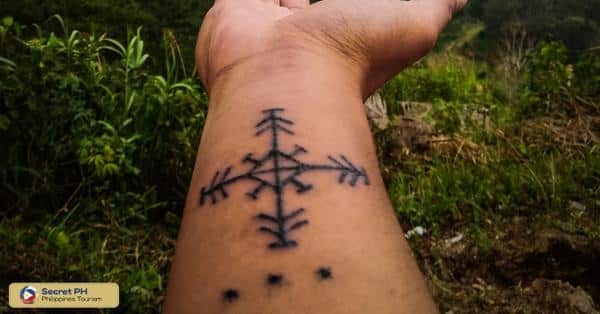
Traditional Kalinga Clothing and Adornments
The Indigenous People of Kalinga have a distinct and vibrant culture. One aspect that showcases their cultural identity is their traditional clothing and adornments. The attire of the Kalinga people is not only functional but also reflects their sense of style, social status, and rich history. Let’s explore the traditional Kalinga clothing and the significance of their various adornments.
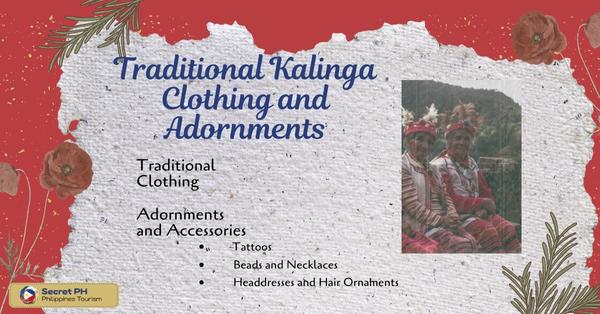
Traditional Clothing
The traditional clothing of the Kalinga people primarily consists of woven garments made from locally sourced materials. Women wear a wrap-around skirt known as “lufid,” which is made from colorful handwoven textiles.
The lufid is often adorned with intricate patterns and motifs, showcasing the skill and artistry of Kalinga weavers. Men, on the other hand, wear a loincloth called “wanes” along with a woven shirt or jacket called “inabal.”
Adornments and Accessories
Adornments play a crucial role in traditional Kalinga attire, adding beauty and cultural significance to their clothing. Here are some notable adornments worn by the Kalinga people:
Tattoos: Tattooing is deeply embedded in Kalinga culture, with both men and women proudly displaying their tattoos. These tattoos serve as marks of bravery, social status, and achievements within the community.
Beads and Necklaces: The Kalinga people adorn themselves with intricately crafted beadwork and necklaces made from various materials such as seeds, bones, and shells. These accessories not only enhance their appearance but also hold symbolic meanings, representing cultural values and beliefs.
Headdresses and Hair Ornaments: Kalinga women often wear headdresses called “tuklong” or “tapis” made from feathers, beads, and other decorative elements. These headdresses are worn during special occasions or ceremonies. They also adorn their hair with colorful ribbons and other ornaments.
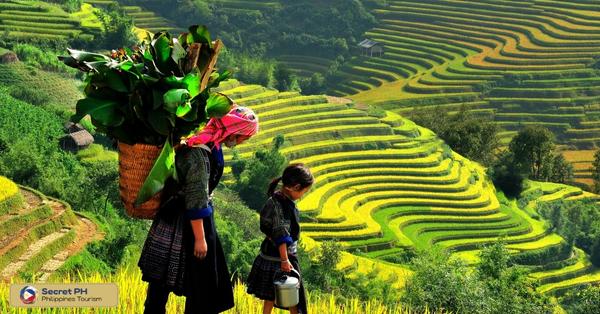
Rituals and Ceremonies in Kalinga
Rituals and ceremonies hold a central place in the cultural tapestry of Kalinga. These sacred practices are deeply rooted in the daily lives of the indigenous Kalinga people, serving as a means of honoring their ancestors, connecting with the spiritual realm, and celebrating life’s milestones. Let’s delve into the diverse and captivating rituals and ceremonies that shape the essence of Kalinga culture.
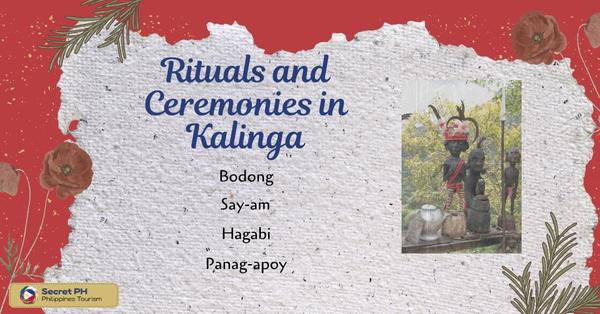
Bodong
The Bodong ceremony is a vital ritual in Kalinga society, symbolizing peace, unity, and protection. It is a pact made between different communities or tribes, designed to maintain harmony and resolve conflicts.
During the ceremony, leaders and representatives come together to exchange sacred objects, perform rituals, and recite traditional prayers. The Bodong ceremony fosters a sense of solidarity and serves as a reminder of the importance of peaceful coexistence.
Say-am
The Say-am ceremony, also known as the “homecoming ritual,” is a joyous celebration that honors individuals who have been away from their village for an extended period. This ceremony is marked by lively music, dance performances, feasting, and the sharing of stories and experiences. It serves as an opportunity for the community to reconnect, strengthen bonds, and welcome back their loved ones.
Hagabi
The Hagabi ceremony is a significant ritual that celebrates the harvest season and gives thanks to the deities for a bountiful yield. At the heart of this ceremony is the hagabi, a carved wooden bench made from a sacred tree trunk.
The hagabi represents abundance and prosperity. During the ceremony, the hagabi is brought out and honored, accompanied by music, dancing, and prayers. This ritual reinforces the community’s gratitude for nature’s blessings and their interconnectedness with the land.
Panag-apoy
The Panag-apoy ceremony is a sacred fire ritual performed during special occasions, such as weddings or the birth of a child. The ritual involves lighting a bonfire using specific materials and reciting prayers to invoke the spirits’ blessings.
The flames are believed to purify the surroundings, ward off evil spirits, and bring good luck. The Panag-apoy ceremony serves as a symbolic purification and renewal of life, marking significant milestones in the community.
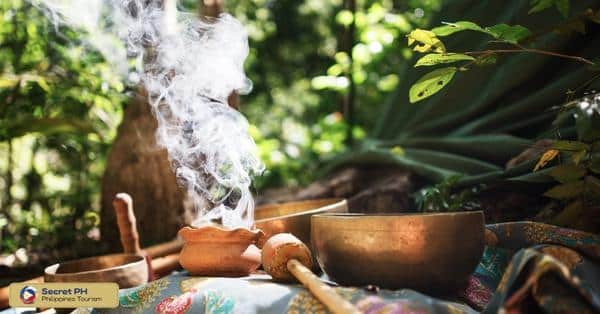
Indigenous Music and Dance
The indigenous music and dance of Kalinga form a dynamic and integral part of the province’s rich cultural heritage. Rooted in traditions that span centuries, these art forms are more than just entertainment. They are a means of expressing emotions, telling stories, and connecting with the spiritual world. Kalinga’s music and dance serve as a vibrant reflection of the community’s identity and values, making them an essential component of their way of life.
Gong Music
Gong music holds a central place in Kalinga culture and is often associated with festive occasions and rituals. The gangsa or gongs are traditional instruments made of brass or bronze, producing distinctive melodies and rhythms. The skilled musicians, known as mangangansi, use different sizes of gongs to create harmonious and vibrant music. Gong music serves as a form of communication, entertainment, and a way to invoke ancestral spirits during ceremonies.
Dance Traditions
Dance is an integral part of Kalinga culture, showcasing their agility, grace, and vibrant traditions. Here are some notable dance forms:
Tribal Dances: The Kalinga people perform various tribal dances that reflect their daily life activities, such as farming, hunting, and courtship rituals. These dances often incorporate rhythmic footwork, hand movements, and vibrant costumes to convey stories and celebrate their cultural heritage.
Warrior Dances: Warrior dances in Kalinga depict bravery, strength, and martial prowess. These dances showcase simulated combat movements, intricate footwork, and the use of props like spears and shields. Warrior dances serve as a testament to Kalinga’s rich history and warrior tradition.
Celebratory Dances: Celebratory dances are performed during festivals, weddings, and other joyous occasions. These dances are characterized by vibrant costumes, energetic movements, and synchronized choreography. They express the community’s collective joy and gratitude, embodying the spirit of unity and celebration.
Chants and Songs
In addition to instrumental music and dance, chants and songs hold a significant place in Kalinga culture. These vocal expressions are often performed during rituals, ceremonies, or as part of storytelling.
Chants and songs serve as a means of passing down oral history, sharing cultural knowledge, and invoking ancestral spirits. The lyrics may narrate legends, or mythical stories, or reflect daily life experiences, accompanied by rhythmic patterns and melodic tunes.
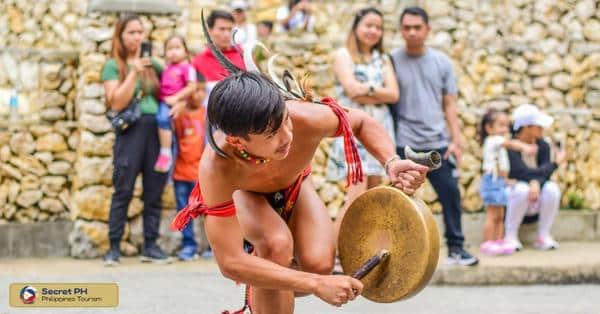
Traditional Cuisine of Kalinga
Kalinga boasts a rich culinary heritage deeply intertwined with its indigenous culture and lush natural surroundings. The traditional cuisine of Kalinga reflects a harmonious blend of locally sourced ingredients, centuries-old cooking techniques, and a strong sense of community. From hearty dishes to unique flavors, Kalinga’s cuisine offers a delightful culinary journey into this culturally vibrant region.
Pinikpikan: A signature dish of Kalinga, pinikpikan is a chicken soup made by beating the chicken with a stick before cooking. It features a distinctive smoky flavor and is often prepared during special occasions and rituals.
Inasinan: This dish consists of fermented freshwater fish, typically caught from the nearby rivers. The fish is preserved through fermentation and served with vegetables and spices, creating a savory and tangy delicacy.
Etag: A type of smoked and aged pork, etag is a staple in Kalinga cuisine. The pork is traditionally smoked in the mountains, imparting a unique flavor that is used in various dishes.
Linapet: Linapet is a type of rice cake made from glutinous rice and coconut milk, wrapped in banana leaves, and cooked to perfection. It is often served as a sweet treat during celebrations.
Sagpaw: A hearty vegetable stew made with a variety of local greens, often accompanied by smoked fish or meat, creating a flavorful and nutritious meal.
Utong: Kalinga’s version of bamboo shoots, utong is a versatile ingredient used in various dishes, such as stir-fries and soups.
Kiniing: Another smoked delicacy, kiniing is made from thinly sliced meat, often pork or beef, and is used in salads, stews, and as a side dish.
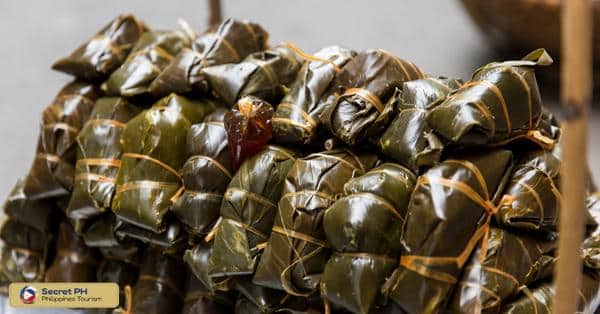
Kalinga’s Festivals and Celebrations
Kalinga is renowned for its vibrant festivals and celebrations, which are deeply rooted in the indigenous culture and traditions of the Kalinga people. These festive occasions are a testament to the community’s strong sense of identity, spirituality, and resilience. They provide a unique opportunity for locals and visitors to immerse themselves in the rich heritage of Kalinga.
Ullalim Festival: A cherished event in Kalinga that pays homage to the province’s cultural roots. Named after the epic poetry “ullalim” of the Kalinga people, the festival features dramatic performances and reenactments of these traditional narratives. It serves as a platform to showcase the artistic talents of the community, including storytelling, music, and dance.
Matagoan Festival: A joyful occasion that highlights the resilience and spirit of the Kalinga people. The festival’s name, “matagoan,” means “to be blessed” in the local language, and it embodies the community’s gratitude for their abundant harvests and blessings from the spirits.
Unoy Festival: A lively celebration in Pinukpuk, Kalinga, that serves as an expression of the community’s unity and solidarity. It features traditional music and dance performances, indigenous games, and a showcase of local handicrafts.
Kalinga Province Foundation Day: An annual commemoration of the province’s establishment. It is a significant occasion marked by various activities, including parades, cultural exhibitions, and community gatherings.
Salidummay Festival: A celebration of Kalinga’s indigenous music and dance. It showcases the province’s traditional performing arts, with captivating dance performances, melodious music played on gongs and bamboo instruments, and colorful costumes that represent the different Kalinga communities.
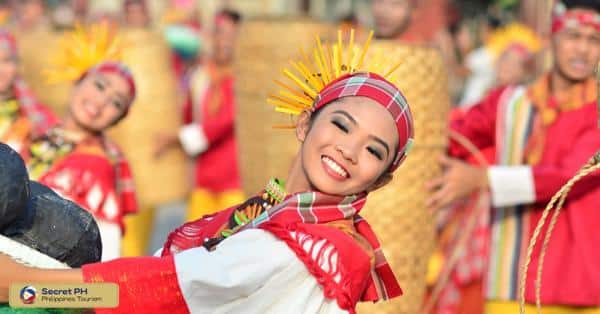
In conclusion
the Kalinga people’s rich cultural heritage is reflected in every aspect of their daily lives, from their traditional attire and adornments to their rituals, music, dance, cuisine, and festivals. These diverse elements serve as a reminder of the community’s deep connection with nature, ancestral spirits, and each other.
By preserving and passing down these traditions for generations, the Kalinga people continue to honor their unique identity and keep their cultural heritage alive. It is through these vibrant customs and practices that we can gain a deeper understanding of the rich and diverse culture of Kalinga.

